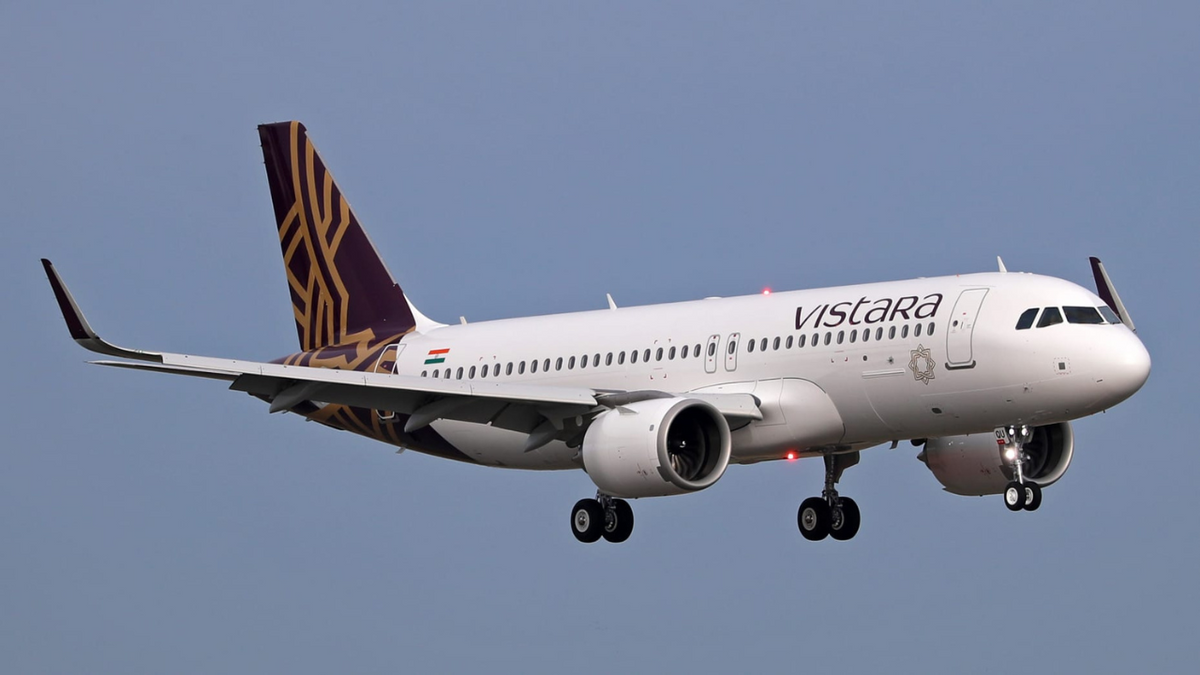Parting is always a heartbreaking experience, and Vistara Airlines did just that. It all came to a close on November 11, 2024, when the airline, which began operations in 2015 after being founded in 2013, gracefully took its last flight.
“As the plane ascends, so do our dreams; let’s glide towards the future, where the sky isn’t the limit but just the beginning,” Vistara wrote in an emotional message to partners.
The emotional weight of the departure was amplified by the fact that the airline hinted at its eventual transformation as Air India and added to the limited possibilities.
Passengers on the last flights experienced a profoundly moving moment when, after landing, the crew played the Bollywood classic Kal Ho Naa Ho—a heartfelt tribute to the conclusion of their journey and the dawn of a new chapter.
Thank you for #FlyingTheNewFeeling
Here’s #ToLimitlessPossibilities pic.twitter.com/OaELl6d4T5— Vistara (@airvistara) November 11, 2024
/afaqs/media/media_files/2024/11/11/OryUJx7w1tnOmfrKk1Ni.png)
This merger marks a significant milestone for India’s aviation industry, establishing one of the largest airline groups globally and providing Air India with a distinctive competitive advantage both domestically and internationally.
This change, while strategic, carries a bittersweet sentiment for Vistara’s devoted flyers, who have valued the brand’s distinct offering of premium comfort.
For passengers, the initial journey will evoke a sense of familiarity: the same crew, the same attentive service standards, and the same aircraft interiors they have come to value will now bear the Air India name.
The newly established fleet of 218 aircraft will position Air India as India’s largest international carrier and the second largest in domestic airspace.
This merger represents Tata Group’s strategic initiative to unify its airline portfolio. Singapore Airlines has maintained a 25.1% stake in this newly-merged entity after a significant investment, positioning Tata to enhance its footprint in Indian aviation.
Penning an emotional note on LinkedIn, Prathap Suthan, managing partner and chief creative officer, BangInTheMiddle, shared his journey of being introduced to Vistara and the life beyond. He added that he happily enrolled in its loyalty programme right after his 20th flight.
“A necessary corporate sacrifice. An unwanted brand execution. Today, on the 11th of November, Vistara will take its final flight. And just like that, it will fade into history. A reminder of a time when loyalty was more than miles and when comfort was more than seat width. The UK will be gone. Another trusted code will be laid to rest. So long, Vistara. Thank you for your brief but beautiful flutter,” he wrote.
/afaqs/media/media_files/2024/11/11/PoRSpUv06cid34ubOCvt.png)
Tarun Singh Chauhan of TSC Consulting reflects on Vistara’s impact, expressing, “Vistara was a fabulous brand created with a clear agenda. It filled in a gap in the market and addressed a very specific consumer.”
Built with a purpose, Vistara brought something special to Indian aviation, filling the void left by Jet Airways and setting a new standard as a premium, passenger-friendly airline. “Vistara is a spectacular success. At multiple levels,” he says, honouring the brand’s legacy.
For Shivaji Dasgupta of Inexgro Brand Advisory, the merger serves as a bridge intended to unite rather than maintain the high-end positioning of Vistara. He asserts, “Vistara’s brand identity—its luxurious service and high-end positioning—will fade into Air India’s broader, state-owned identity as the country’s primary full-service carrier.”
Business strategist Lloyd Mathias concurs, stating that “it is improbable to sustain Vistara’s premium positioning following the merger with Air India.” As Vistara’s staff merges with Air India, its distinctive character might leave only memories of a brand that briefly made passengers feel that luxury was within reach.
While the merger presents opportunities for Air India, challenges persist. Passengers of Air India frequently express concerns regarding service deficiencies and logistical challenges, especially in the context of flight disruptions.
Chauhan remarks on the disparity, saying, “With an ageing fleet and inconsistent service, transforming the airline into a world-class carrier will be a very tough and long-term process.”
In an industry where reputation holds little weight without reliability, Dasgupta emphasises that it is the quality of service—not the corporate name—that today’s travellers genuinely appreciate.
While Air India carries the Tata name, it is the delivery of a consistent and premium service experience that will truly cultivate passenger loyalty. Brands such as Jet Airways and Indigo earned trust not through their history but by providing something dependable for people.
“However, Tata’s influence could boost Air India in areas like talent acquisition, as careers may be safer with the Tatas in a recession-sensitive industry,” he notes.
Mathias says that while Tata’s esteemed reputation may help shape consumer perceptions during the initial phase of this merger, he is aware that this goodwill will not suffice on its own.
Tata is still a newcomer in the global airline industry compared to established leaders like Singapore Airlines, who have long perfected the art of excellence.
Vistara departs with a legacy of aspiration and luxury—a testament to the belief that, for a fleeting moment, passengers felt the sky was merely the beginning. The journey now transitions to Air India, under Tata’s leadership, to honour this legacy and demonstrate that these skies, once graced by Vistara, will ascend with a revitalised mission.

